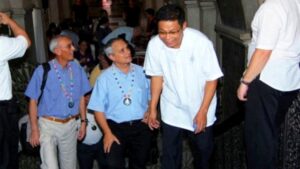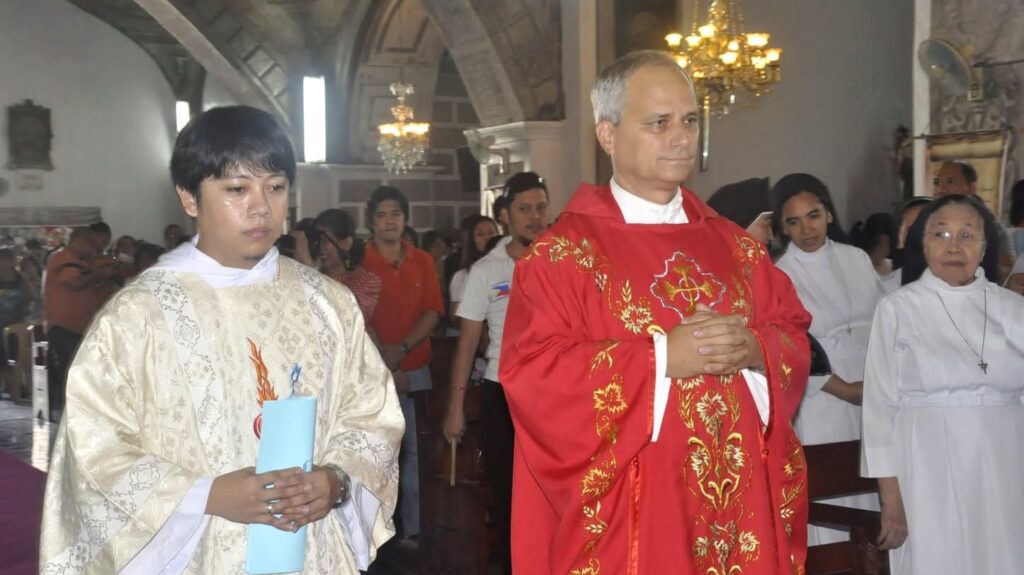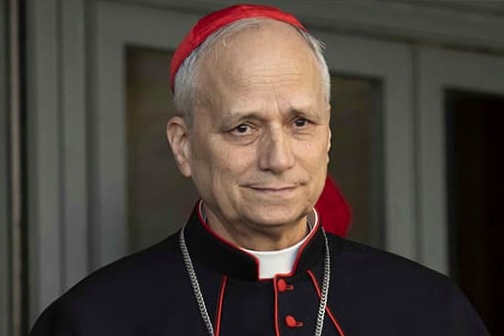Pope Leo XIV: A pontiff who might understand us
When the white smoke rose over the Vatican on May 8, few in the Philippines knew much about Cardinal Robert Francis Prevost. But when he stepped onto the balcony and was introduced as Pope Leo XIV—the first pope from North America—something stirred across this island nation of more than 80 million Catholics. Not just curiosity, but hope. And something deeper: a sense of kinship.

That kinship, it turns out, was not imagined. Long before his quiet ascent to the Vatican—before the red hat and the global attention—Prevost had already stood among Filipino faithful. As prior general of the Order of Saint Augustine (OSA), he visited the Philippines more than once: first in 2004 to bless the Augustinian friary in Brgy. Mohon, Talisay City; again in 2010 to visit the Basilica Minore del Santo Niño de Cebu in Cebu City; and later that same year, in Manila, where he presided over Mass at the historic San Agustin Church in Intramuros during the OSA’s Intermediate General Chapter.

These were not grand papal tours, but humble pastoral visits—marked not by spectacle, but by presence. The friars and parishioners who welcomed him still recall his warmth, his simplicity, and his deep attentiveness. He came not as a figure of power, but as a brother in faith.
Today, those memories glow with new resonance. What were once local milestones have become part of a deeper story—a story of proximity, of spiritual affinity, and perhaps, of providence.

Pope Leo XIV is not the first pontiff to capture Filipino hearts, nor will he be the last. But his story—a childhood in Chicago, a missionary priesthood in Peru, and a lifelong bond with the Augustinian tradition—echoes something intimately familiar. He was not shaped by Vatican corridors but by the edge of the Church: dusty barrios, small chapels, and the kind of daily struggle Filipinos know well.
Filipino Catholicism is both grand and ordinary. We have the grandest celebrations—processions that clog entire cities, statues robed like royalty, songs and devotions that go back generations. But the faith is also in the ordinary: the family rosary after dinner, the quiet prayer whispered before an exam or a medical test, the flickering candle left by a grandmother at the feet of a saint in Quiapo Church.
Pope Leo XIV comes from this kind of Church—one that walks with the poor, listens more than it speaks, and does not hide behind marble. As bishop of Chiclayo in northern Peru, he served communities not unlike ours: poor in resources, rich in spirit. And as prefect of the Dicastery for Bishops, he chose leaders who were not just administrators but shepherds—men who know the smell of their sheep, as Pope Francis once said. That kind of leadership resonates with Filipinos, who expect their priests to walk with them, not above them.
The Philippines has long been called the cradle of Catholicism in Asia. Our churches are full (even on weekdays), our overseas workers bring their faith with them across oceans, and our communities turn to the Church not just for sacraments, but for strength. We are a people of devotion—of Simbang Gabi, of Black Nazarene processions, of Santo Niño festivals that blend Spanish heritage with indigenous soul. And we are, in many ways, missionaries ourselves: not by title, but by presence.
What does it mean, then, to have a pope who once walked our chapels, spoke our language of devotion, and quietly presided over our sacred spaces? It means having a leader who might understand—not just the theology, but the rhythm—of Filipino faith. Someone who knows what it means to serve joyfully, to hope stubbornly, and to love the Church even when it’s far from perfect.
One day, perhaps, Pope Leo XIV will return to our shores—not as a visiting friar, but as the Bishop of Rome. He will see again how we dance with saints in the streets, how we laugh and cry in the presence of God, how we hold on to faith even when all else feels uncertain.
But even if that visit never comes, he will not be far from us. Because sometimes, the bridge between Rome and the Philippines is not built by distance—but by shared devotion.



0 Comment